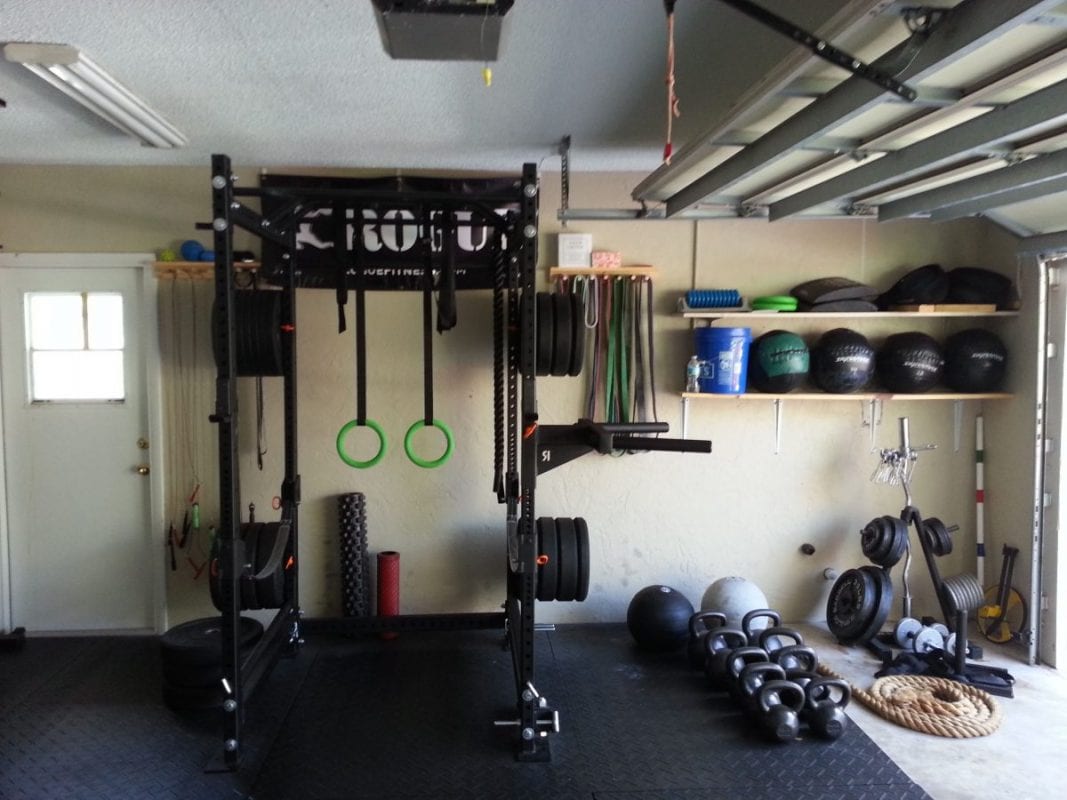We all like the idea of getting ourselves fitter and healthier, but the prospect of going to a gym puts lots of people off. It’s not just about parading the flab in front of other people; it’s also the time it takes to get to and from the gym, and the cost of membership. Getting fit needs serious commitment, and if the prospect of travelling to a gym in all weathers in the early hours or late at night to fit it into your busy schedule puts you off, I’m not surprised. Also, if you don’t have the time, once you’re at the gym, you could have to queue for the equipment, which certainly takes the edge off your training session. All this isn’t taking into consideration the cost of membership. Some employers provide subsidized memberships, but most of us have to pay the full whack, and that can be thousands of dollars a year. And if you don’t visit regularly, you’re most likely to see it as wasted money. However, there is another option that you could consider. There’s one area of your home that’s often neglected, and rather than utilized is just used as a dumping ground for all the stuff that doesn’t fit in the rest of the house, and that’s the garage. Lots of people have discovered how easy it is turning your garage into a home gym. The great thing about a gym in the garage is the commute is as short as can be, and there’s no queuing for the equipment, it’s all yours. Oh, and the expense – all you need for a basic workout isn’t going to cost you much more than an annual gym membership.
Getting the Garage Ready
If your garage is large, you may be lucky enough to already have enough space for your home gym, but for most of us, it will mean cleaning out the garage space, decluttering, and finding alternative places for all the stuff that’s lying around. Oh, and it will probably mean your car is relegated to the driveway or street for the remainder of its life. If you want to turn your garage into a gym, you’ll have to get organized, like it or not.
You’ll want to keep as much floor space free for your gym equipment as possible. The walls and ceilings will become the storage space for items you’re not using, which is why it’s important to decorate this space as much as possible. Nowadays you can get some great decor for home gyms, for example, LED neon lights can be the perfect addition to a dark garage.
- Think about having a garage sale to get rid of any stuff that’s gathering dust and you no longer use.
- If there are large items you know, you’ll use in the future, but don’t have space for them, consider hiring a storage unit. I know it’s not ideal as the object of a home gym is to save money, but its either that or a garden shed.
- If you’ve got things which are old or broken, throw them away. If you’ve not used them in ten years, then you’re unlikely to use them in the next ten.
- Use the ceiling as a means of hanging storage boxes off the floor. If you have large items such as surfboards you can use suspended racking to keep them out of the way until summer comes around again.
- You will need access to stuff, so choose one wall where you can stack containers. This way, everything you expect to need regularly is in one location.
You probably won’t need all the garage space for your gym, so try and spit the area into one dedicated to garage items, and the other to your gym. Having worked out how much space you have, and where you’re likely to put your gym equipment, it’s time to clean out the garage and make it ready for the transformation. A little later I’ll run through the basic stuff you’re going to need, so you can gauge how much space you’ll need to allocate to your gym.
Keeping it Snug
If you’re going get the best from your home gym, it’ll mean using it summer and winter. Unfortunately, not every garage is heated and not every garage as thermal insulation for when there’s snow on the ground. No car has ever complained about being cold in the winter! So if you’re going to use your gym right through the year, it’ll mean insulating the garage door. Insulation will help reduce energy costs of keeping your gym warm in the winter and reduce outside noise, and the sound of your exertions reaching the wider world. Adding insulation is a simple DIY project, and should cost less than £150 for the average size . If your garage door is made of steel, then foam or fibreglass works well as an insulator, reflective cardboard can be used on flat-panel doors, and you can use foam on wood.
Getting the Floor Right
Most garage floors are made of hard concrete, and it’s not the best surface to exercise on. The hard nature of concrete means it won’t absorb the shock of high-intensity movement during exercise and training. Over time, excessive impacts on concrete surfaces can damage the ligatures and muscles of the body. Certainly the floor area where you are going to exercise needs to be covered in an absorbent material, better yet the whole garage floor. You can always try carpet or rubber tiles, and even high-density foam. However, the experts recommend an epoxy resin coating that can be painted onto the concrete. The epoxy is highly durable and is water and dust resistant so that it can be easily cleaned. Applying the epoxy to the garage floor is something any DIYer should be able to tackle in a day.
Equipment that has to be Bought
Creating your home gym can be daunting, as the cost of professional equipment can be staggeringly expensive. However, not every piece of equipment you will use needs to be purchased off the shelf. Some bits of equipment can be made by you, and I’ll come to that a little later, but there are some pieces you are going to have to buy. Whether you buy them new or second-hand depends on your budget and your preference.
One of the reasons to go to the gym is to exercise your muscles, to give them added strength, and in doing so, turn body fat into muscle tissue. So with any gym, you are going to need weights to get those muscles working. You’re also going to require essential safety equipment like stands, and somewhere to keep the weights when not in use.
Let’s start with the basics:
- A 20Kg Olympic Bar
- 2x 20Kg bumper plates
- 2x 15kg bumper plates
- 2x 10kg bumper plates
- 2x 5kg bumper plates
- 2x 2kg bumper plates
- A weight storage rack
- Rings
- Squat/Press stands
- Bench Press stands
- A bench
- A speed rope
- A large tyre for dragging and odd-shaped lifting
Equipment You Can Make
You have the option to buy all the stuff for your gym, but it is gratifying if you can make some of the pieces you need yourself. Building DIY gym equipment will also save you money. There are four pieces that a competent DIYer should be able to tackle with no problem.
- Plyometric Box: It’s the fancy name for a box you can stand on. All you need are six pieces of plywood cut to size, and some screws and glue. The box is used for step-ups, box squats, dips, and box jumps, and anything else you want. After cutting the plywood to the size of box you want, fix the joints with glue and screws, and it’s good to go. You may want to cover the box with a non-slip surface.
- Medicine Ball: If you have got an old basketball lying around this is perfect, if not a cheap one will do. You don’t need to buy the most expensive brand as you’re going to slit it open and fill with pool salt (not sand), and then use a tyre patch to close up the hole. The medicine ball is excellent for weighted sit-ups, and for squatting, and throwing.
- Parallettes: Without the space for parallel bars, parallettes can give you a similar type of equipment for dips, pass-throughs, deficit push-ups, and handstands. You can make them with PVC piping from the home improvement store. Each parallette needs a long length and six shorter lengths, two right-angled curves and two T-corners. Think of them as a grab handle with a t-bar on the bottom which keeps the parallette upright and steady.
- Power Rack: This is probably the most ambitious pieces of DIY gym equipment. It requires building a wooden frame that can take your weight for doing pull-ups, and to also include a rack for holding your weights when doing bench presses. There are several how-to videos and build instructions online for you to follow.
Getting Down to Business
Now your home gym is ready, how can you get the most out of it? Unlike going to the gym, there are no personal trainers available to quiz about using the equipment and repetitions. However, you can sign up for an online training course, which will give you access to videos on how to do all the exercises you need, and advice on how to proceed from one activity to the next. Your garage gym could quickly pay for itself in the first year, and with having it so close, it will be easier to persuade the rest of the family to get involved.








